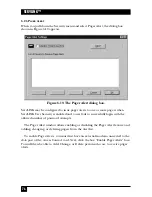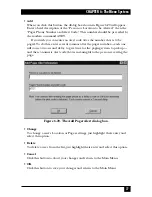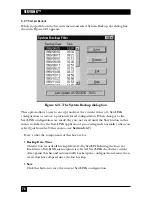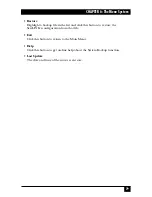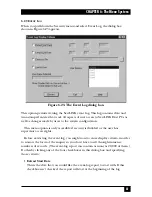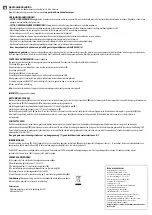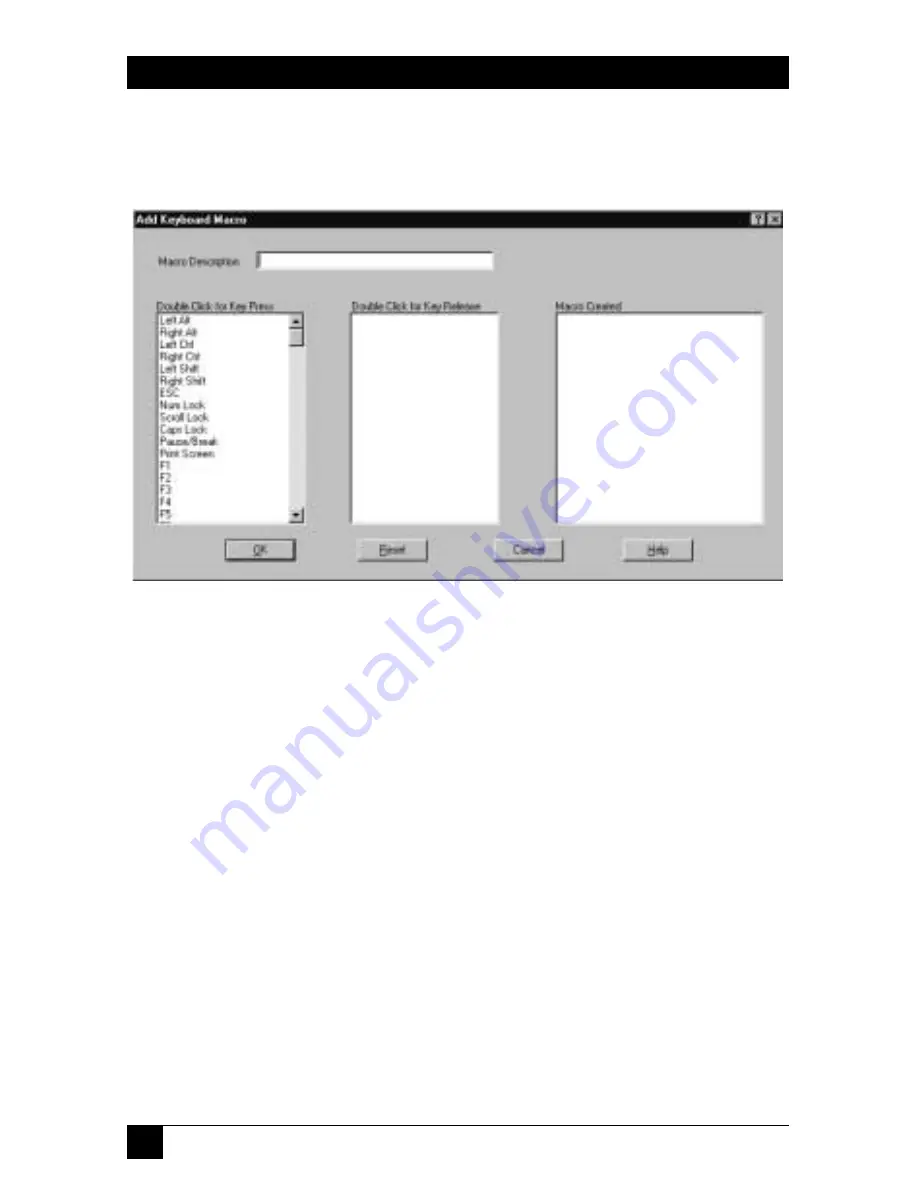
90
SERVLINK™
6.4.2 T
HE
A
DD
D
IALOG
B
OX
When you click the Add button in the main Keyboard Macros box, the dialog box
shown in Figure 6-30 appears:
Figure 6-30. The Add Keyboard Macro dialog box.
Here’s what the components of this dialog box are for:
•
Macro Description
Enter a name or description here for the macro you are adding: for example,
“Ctrl+q” or “Quit” for a “quit program” sequence that consists of “press and
hold [Ctrl], press [q], release [q], release [Ctrl].” (You can’t successfully add a
macro unless you give it a description.) Once you add the macro, this
description will appear in the
Macro Name
column in the main Keyboard
Macro dialog box (see
Section 6.4.1
).
•
Double Click for Key Press
Each keyboard-command sequence begins with a single keypress; even
sequences in which multiple keys are to be pressed at the same time can
actually start with the “modifier keys”—[Shift], [Ctrl], [Alt], etc.—being
pressed first. (For example, the [Ctrl][Alt][Del] sequence works fine if you
press and hold [Ctrl], then press and hold[Alt], then press [Del] and release
all three keys one after the other.)
This being the case, highlight the keypress listed in this column that starts
the macro you want to add: in our hypothetical [Ctrl][q] example, it would be
“Left Ctrl” or “Right Ctrl”. Double-click the keypress to select it. The pressed
key will appear as is in the
Double Click for Key Release
column (“Left Ctrl”,
Summary of Contents for ServLink ACR3500A
Page 111: ...NOTES ...
Page 112: ...NOTES ...
Page 113: ...NOTES ...
Page 114: ...NOTES ...
Page 115: ...NOTES ...

